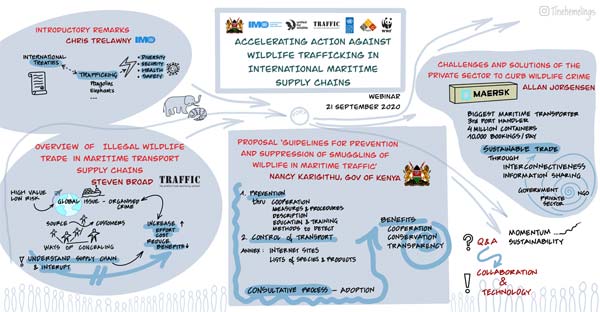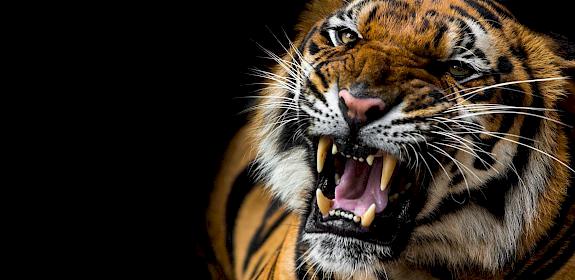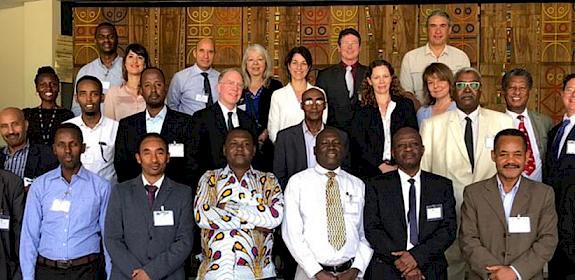IMO to develop guidelines for the prevention and suppression of wildlife trafficking
Cambridge, UK, 30th September 2020—member states of the International Maritime Organization (IMO) have approved a proposal by the Kenya government for the development of guidelines for the prevention and suppression of wildlife smuggling using international shipping. The decision was taken at the 44th meeting of the FAL Convention on facilitation of international maritime traffic.
With an estimated 72–90% in volume of wildlife products illicitly trafficked by sea, and further recognising the role of the shipping industry in global trade and the global economy, the need to develop these guidelines cannot be understated. Such a move will help highlight the need to address wildlife trafficking as the serious organised transnational crime that it actually is.
Nancy Karigithu, Principal Secretary State Department for Shipping and Maritime at the Ministry of Transport, Infrastructure, Housing, Urban Development and Public Works, Government of Kenya
The new guidelines will be developed through a consultative approach between government agencies, the private sector and the NGO community to help promote stronger due diligence, transparency and responsibility-sharing by all players in the maritime transport.
They will help build more robust capacity in the sector and promote co-operation at national, subregional, regional and international levels so as to strengthen the international response to transnational criminal networks trafficking in wildlife through maritime supply chains.
Allan Jorgensen, Head of Sustainable Trade, Maersk said “As a member of the United for Wildlife Transport Taskforce, our company is fully committed to combat the illegal wildlife trade and we are ready to work with IMO on the development of such guidelines reflecting the roles and responsibilities of companies and authorities.”
Wildlife traffickers exploit legitimate transport services, including maritime supply chains, to move their contraband across the world. Maritime transport is the usual method chosen to smuggle bulky non-perishable illegal wildlife products such as ivory, pangolin scales, and timber. In 2019 alone, over 90 tonnes of pangolin scales and 15 tonnes of elephant ivory were seized from containerised cargo transported between Africa and Asia.
Steven Broad, Executive Director, TRAFFIC said: “These incidents represent only a fraction of the true scale of the problem and the commitment by IMO government representatives today is a strong sign in recognition of the importance of inter-agency and cross sectoral collaboration to effectively disrupt trafficking chains”
Mohamed Awer, CEO, World Wide Fund for Nature-Kenya (WWF-Kenya) said: “Kenya has worked hard to reduce its role as a key transit route for wildlife crime products, however, wildlife crime continues to be a major threat to biodiversity in Kenya and across the world. To address wildlife crime, we need to increase collaboration and build common standards to shore up all parts of the trafficking chain and routes.”
WWF, TRAFFIC, the United for Wildlife Transport Taskforce and UNDP, along with other partner organisations have a long experience working and developing tools to address wildlife trafficking and stand ready to provide their technical support to IMO’s member states for the development of the Guidelines, utilising the existing tools and expertise on addressing this issue.
On 21st September the IMO, the Government of Kenya, United for Wildlife, TRAFFIC, WWF and the UNDP-GEF Project Reducing Maritime Trafficking of Wildlife between Africa and Asia under the Global Wildlife Program (GWP), co-hosted a webinar on “Accelerating action against Wildlife Trafficking in international maritime supply chains.” The event, which drew over 200 participants, depicted the global scale of wildlife trafficking and its devastating impacts across biodiversity, economic development, security and human health. It also as discussed efforts by governments and the private sector to address wildlife trafficking within maritime supply chains. The webinar recordings can be viewed below:





